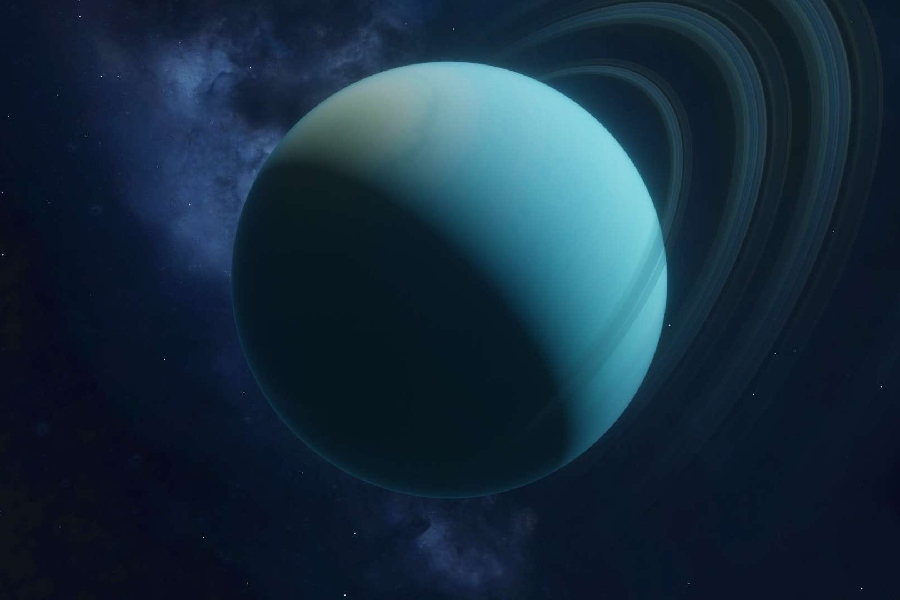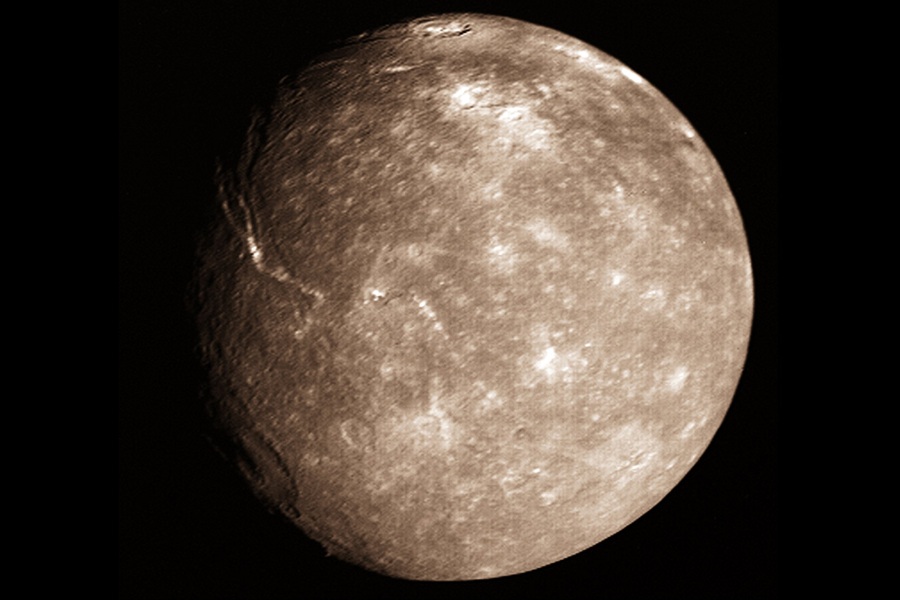Peering through a telescope at the pale blue orb of Uranus, one might notice several tiny dots in orbit—the planet’s collection of moons. With over two dozen moons discovered so far, what is Uranus largest moon?
Here, you will learn about the immense, mysterious moon orbiting this ice-giant world over a billion miles from the Sun. Discover key facts comparing its size and geology to Earth’s own lunar sphere — get ready to encounter the mighty moons of Uranus!
As we explore what makes this distant, frozen moon so special, there are some missing pieces of the puzzle. For instance, how did such an immense object form around the icy planet? Why does one half appear so shockingly different from the tranquil other? Additional mysteries lurk beneath the surface.
Read on for clues to the mysteries that still surround this frigid lunar giant. Understanding the story of Uranus’ superlative moon can shed light on how such extreme moons accumulate over billions of years across the cosmos.

What Is Uranus Largest Moon?
Uranus’ largest moon is Titania. This moon is one of the five major moons of Uranus and is the eighth-largest moon in the solar system. Titania is about half the size of Earth’s moon and is known for its heavily cratered surface, indicating a history of impacts.
It was discovered by the British astronomer William Herschel in 1787 and is named after the queen of the fairies in Shakespeare’s “A Midsummer Night’s Dream”.
History of Discovery
William Herschel first observed Titania on January 11, 1787, while testing a new telescope design. He recorded Titania as the “first satellite of the Georgian planet”, which would later become known as Uranus. However, due to its great distance and dimness, further study of Titania had to wait several decades.
It wasn’t until the 1840s that astronomer William Lassell was able to image Titania using an improved telescope technology. Lassell recorded Titania as the largest of four visible moons orbiting Uranus, the icy giant planet.
Detailed exploration of Titania had to wait until 1986. When visiting, spacecraft were finally able to capture close-up flyby images of the moon and Uranus. These images revealed Titania to be a truly massive moon.
Approximately 1,600 kilometers in diameter – establishing it solidly as Uranus’s largest moon out of the 27 confirmed. The initial discovery observations by famous astronomers Herschel and Lassell kicked off over two centuries of unraveling the many mysteries. There are still many mysteries surrounding this frigid, colossal moon.
William Herschel’s Discovery
In 1787, famed astronomer William Herschel first spotted Titania – a faint new point of light orbiting the planet Uranus. Though tiny and lacking detail, Herschel carefully mapped its location over two nights. He originally named this moon the “first satellite of the Georgian planet”.
His early name for Uranus was discovered in 1781. While limited, Herschel’s telescope feat revealed one of the earliest known moons of the planet. It kickstarted the modern discovery of the mysterious Uranian system.
William Lassell’s Discovery
While William Herschel discovered Titania, his telescope revealed little detail. Half a century later, William Lassell rediscovered Titania using improved optics. Finally resolving it as a large spherical moon rather than a point of light.
Lassell also reported three more moons, proving a true system in orbit. His powerful observations reinforced Titania’s existence and helped correct old data. By paving the way for future exploration, Lassell’s advancements allowed more understanding of these distant outer worlds.

Characteristics of the Largest Moon
Titania is enormous – spanning over 1,500 kilometers as one of the largest moons. The icy surface reaches bitterly cold temperatures of -214°C, with no sign of human life. Its greyish-brown color is attributed to the frozen water crust, long valleys, and giant craters that mark the pitted plains.
Unlike most moons, Titania has a perpendicular, tilted orbit that suggests it may be a captured Kuiper Belt object rather than formed by Uranus. Studying Titania’s origins could reveal insights into the early solar system’s formation.
Orbital Dynamics
Titania orbits Uranus relatively quickly, completing one loop around the planet every 8.7 days, indicating a strong gravitational bond. However, unlike most moons, Titania has a strangely retrograde orbit. Rotating backward around Uranus in the direction opposite of the planet’s spin.
Titania’s poles sit perpendicularly tilted nearly 157 degrees relative to Uranus’ equator. Impact craters across Titania’s surface reveal past collisions with neighboring moons on crossing paths. These complex orbital interactions will continue shaping the geology of backward-tilted Titania over future eons.
Evidence of Subsurface Oceans
Titania likely has an internal composition supporting possible subsurface oceans, especially given its size. Smooth crater floors and oddly elongated valleys may come from hidden water-dampening impacts or carving surface materials. An underground sea could also feed observed icy flows.
No geysers have proven deep oceans yet. But future probes can employ radar and gravimetry to scan for evidence of Titania’s hidden aquatics.
While still unproven, Titania seems theorized to harbor ideal conditions for warm liquid layers tucked warily from the view below. Further missions to this giant moon may yet reveal an ocean world lurking underneath.
Size and Mass Comparison
At 1,578 km wide, Titania dominates as the largest of Uranus’ 27 known moons. Slightly larger than even dwarf planets Pluto and Eris roaming the outer solar system. It ranks among the top 10 biggest round moons.
Approaching the scale of Saturn’s Rhea and Jupiter’s Callisto at around 1,500 km, only Ganymede and Titan substantially exceed Titania. So despite orbiting distant Uranus, icy Titania still manages to stand out as one of the largest spherical moons around any planet discovered so far.
When viewing a Uranus moon size comparison, Titania clearly towers over all fellow Uranian satellites. Its immense size compared to other moons of the icy giant planet enables detailed study even from afar.
Conclusion
As we explored frigid Titania in-depth, we’ve touched upon the main topic of the article– what is Uranus largest moon. From its first sightings by astronomy pioneers to revelations of its tremendous scale rivaling dwarf planets – modern discoveries cast new light on this mammoth moon.
Titania’s vast size helps explain why it ranks first among the 27 known moons of Uranus. Yet, with much still to unveil about its bizarre orbit and possible subsurface ocean, Titania may yet have even grander secrets left to astound us.
Just as William Lassell’s improved observations paved the way for future study of Uranian moons long term, someday researchers may look back to when icy Titania first came into scientific focus. Researchers may view this as a pivotal moment that enabled much future research.
